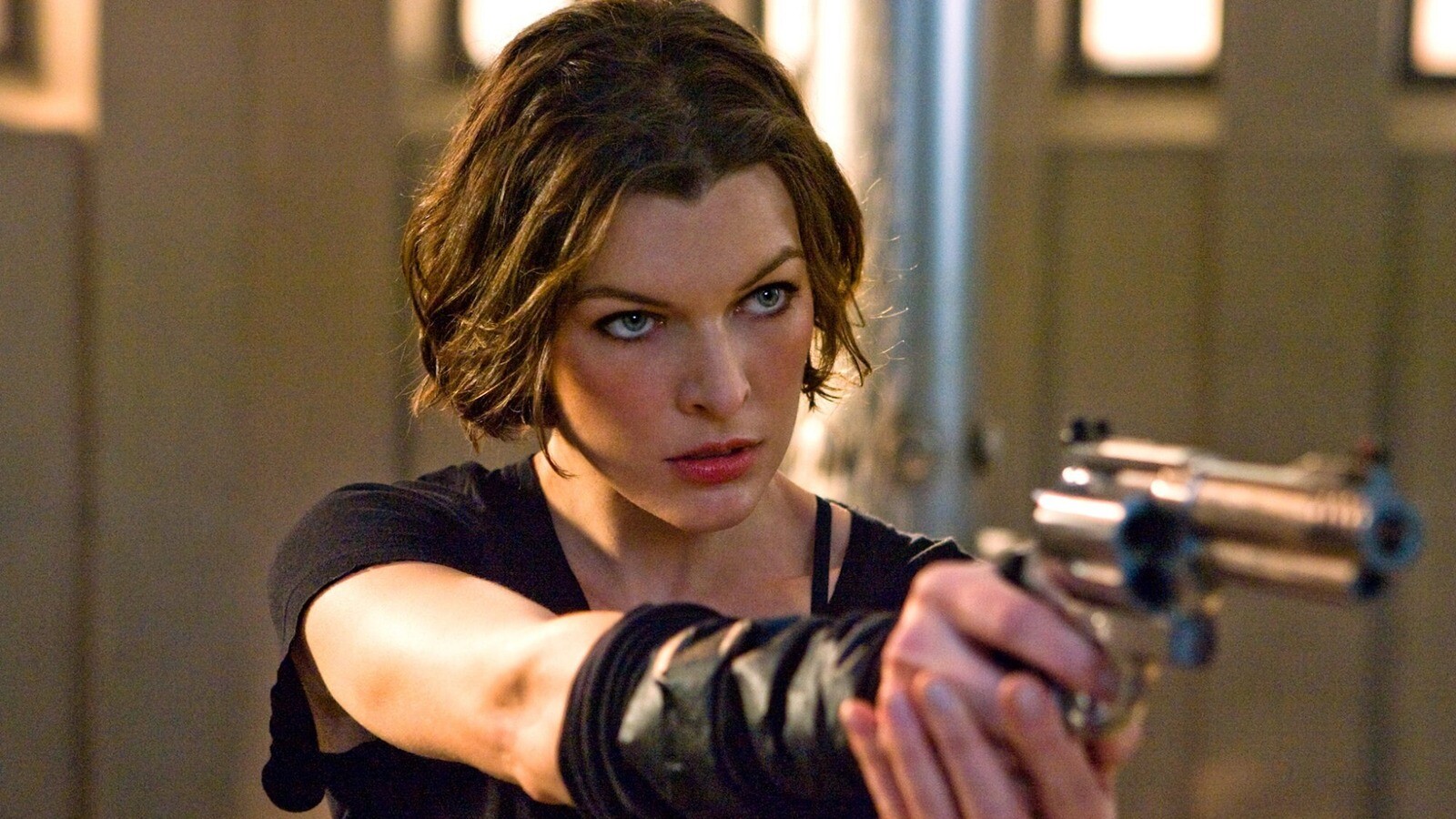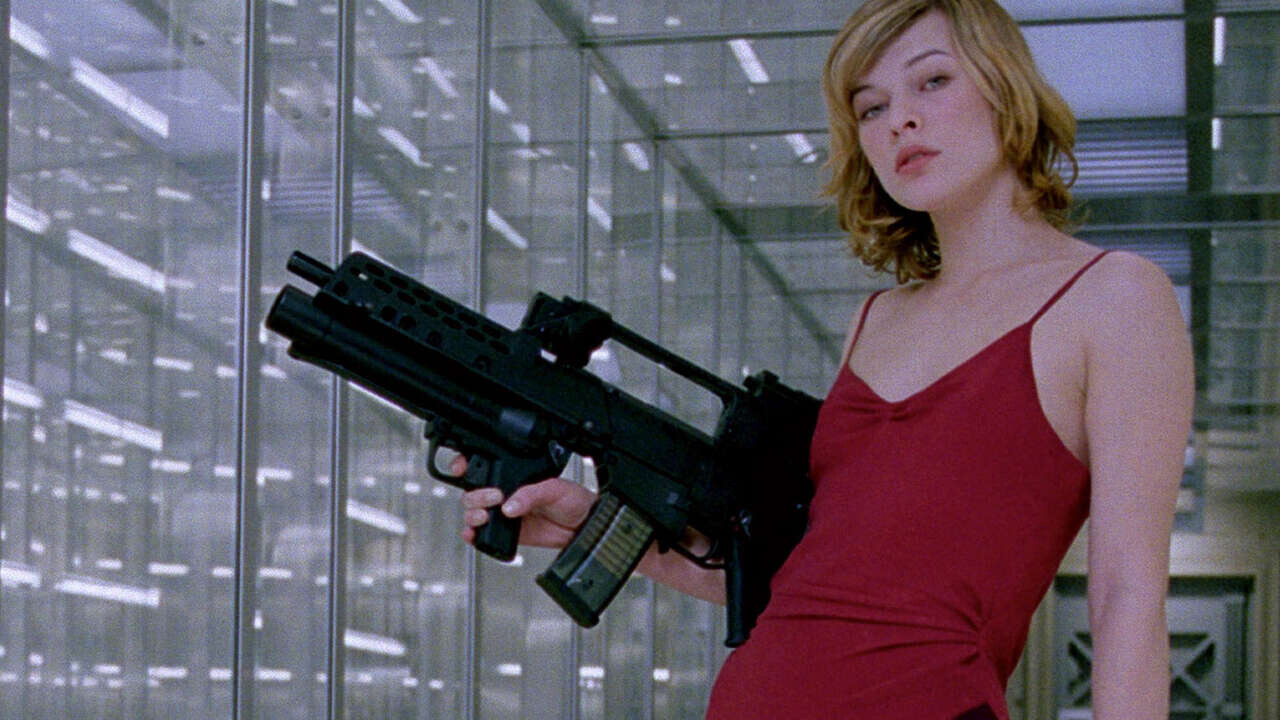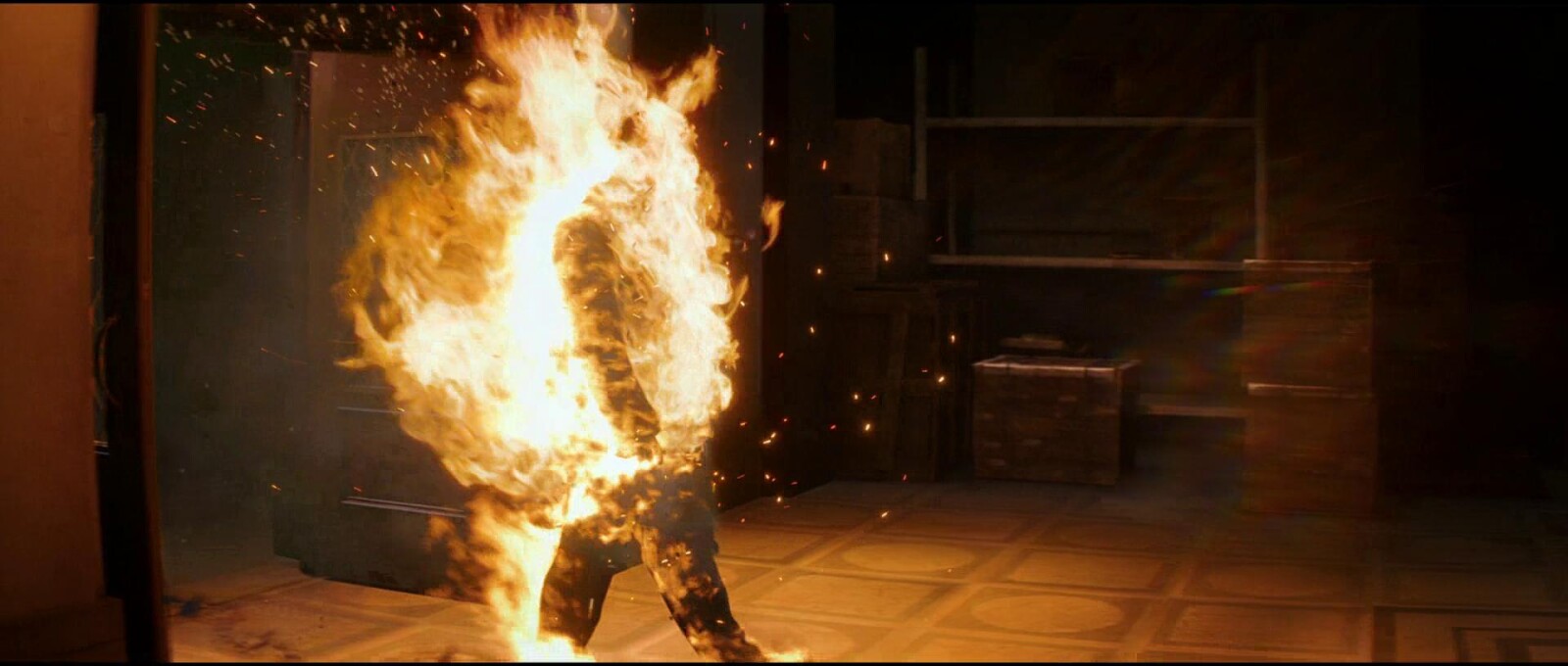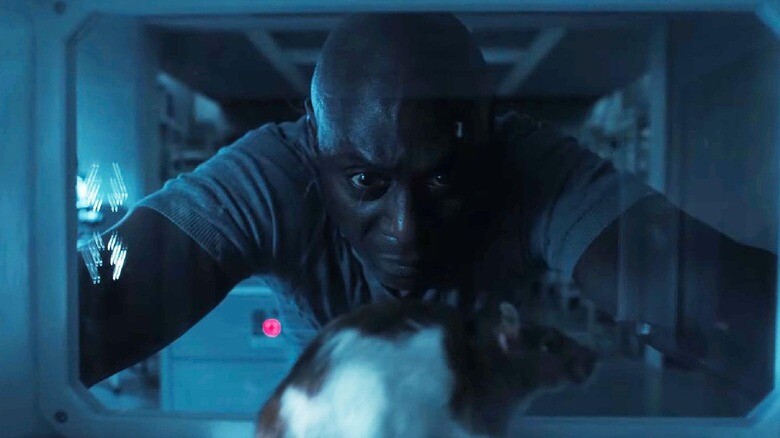15 Contagious Facts About The Making Of The ‘Resident Evil’ Movies

From a killer George A. Romero script bravely featuring mutant sharks to the real reason Lance Reddick is playing Albert Wesker in the upcoming Netflix series (besides the fact that he’s awesome) — have a look (don’t hesitate!) at our list filled with behind-the-scenes facts about the making of the Resident Evil film franchise.
Lewis Carroll's Alice in Wonderland Inspiration

Sony Pictures
Writer and director Paul W.S. Anderson looked to the Carroll classic for inspiration.
“It struck me that the fundamental idea of 'girl in a dress goes into hole in the ground and meets strange things' is exactly what both Alice in Wonderland and Resident Evil are.” This makes sense, and explains why he chose to call the Hive the Red Queen, too.
George A. Romero Would Originally Have Been The Writer/Director

The studio initially hired Romero, who then wrote a script for the first ever Resident Evil movie because who better to adapt your zombie game than the guy who created the modern zombie genre in the first place? Apparently, that means jack, because while some folks dug Romero’s script — which stayed more true to the game’s plot and creatures, and predominantly focused on game characters Chris Redfield and Jill Valentine — some thought it wasn’t good at all, and he was fired.
Actor Avan Jogia Played Leon Kennedy In The Game For "Hundreds Of Hours" In Preparation For Resident Evil: Welcome To Raccoon City

Sony Pictures
The Canadian actor said that Resident Evil 4 was one of his favorite games as a teenager. “When I first put on the full tactical gear and looked at myself in the mirror, I thought, ‘Okay, this is a childhood video game character that I now get to embody,’ which is a pretty exciting thing. That speaks to what we just talked about and trying to be the adult that your teenage self wanted to be. So playing a character that I played as a child is pretty high towards the top.”
Paul W.S. Anderson Was Inspired By James Cameron To Evolve The Franchise

“Aliens” / 20th Century Studio
Said the director of four of the seven films: “Franchises need to evolve or die. You can’t just keep making the same movie, and I was very inspired by what James Cameron did when he did Aliens. Because Ridley Scott’s Alien is one of my favorite, favorite films. You look at that as a haunted house movie in space. It’s almost a perfect movie. How intimidating to try and follow up the perfect film. How do you do better? And I think Cameron was very smart in that he didn’t try to redo Alien. He made actually a different kind of film.”
The Dummy Puppet In The Iconic Laser Scene

Sony Pictures
The visual effects team made a full-scale model of Colin Salmon for that gnarly scene from the original film. The model was then cut up into small cubes, and put in front of a green screen while being held together by individual rods. As the team removed the rods, the mold fell apart, giving us this:
The Hive’s Japanese Influence

Sony Pictures
Anderson said that Japanese architecture Tadao Ando inspired him to create a lot of the aesthetics we see in the films. “The Hive is built from pre-stressed concrete blocks that are used in a lot of construction because of the way light plays over that concrete. That's taken straight out of the Tadao Ando playbook. He's one of the top Japanese architects. He builds a lot of churches and museums. That was a huge direct influence. “
Hollywood Studios Didn’t Think They’d Have Any Success With A Female Lead

Sony Pictures
According to director Paul W.S. Anderson, having a female lead in Hollywood at the time wasn’t “fashionable,” and the studio saw it as taking a big risk, but the audience seem to latch on to Milla Jovovich's Alice almost immediately.
Milla Jovovich Accidentally Annihilated A $100,000 Camera On The Set Of Resident Evil: Afterlife

Sony Pictures
Anderson told Jovovich to swing the shotgun toward the camera lens, which she did, taking the camera out in the process.
The Extras Playing Zombies Attended A Zombie Boot Camp

Sony Pictures
On the commentary track of Resident Evil: Deluxe Edition, Anderson explained that they felt it necessary to give the future zombie players some extra help so it didn’t end up looking like they were making a “Thriller” video.
Alice’s Name Is Never Said Out Loud In The Original Movie

Sony Pictures
Anderson said this was intentional, because he didn’t even want her to know who she was when she woke up in this world of zombies and creepy AI.
“What I provided her with in the first movie, was like a blank slate. She wakes up in the first movie, she has no memory. She has no concept of who she is and how she feels about things. While you're watching as an audience member, you're watching a character being constructed in front of your eyes."
Paul W. S. Anderson Didn’t Want To Solely Please The Game’s Fans

Sony Pictures
The director explained why he made such big changes from the game to the movie: “When you make a video game movie, you have to please two audiences. There’s the hardcore fans, who know everything about the video game and about the world and then there’s the more general audience, who you also need to come and see the movie, who don’t know anything about the world. I think sometimes they feel a little excluded because they go, “Oh this is not for me.” Milla really became the avatar for that audience. Basically we were saying to the audience, “It’s OK if you don’t know anything about the world of Resident Evil,’ because the central character is a completely new character. The fact that Milla woke up without any memory, it kind of made it OK. If you don’t know anything about the world of Resident Evil, that’s OK because your leading lady — she’s right there with you.”
The First Movie’s Title Had To Be Changed Thanks To 9/11

Sony Pictures
The original film was supposed to be called Resident Evil: Ground Zero, and would’ve been released in October 2001. But then, you know, that thing happened. Anderson was on a plane flying out of New York to go shoot the last two days of the film when the attacks came, and the shoot as well as the release was delayed for a while.
The Stunt That Went Wrong On The Set Of Resident Evil: The Final Chapter

Sony Pictures
Stuntwoman Olivia Jackson lost her arm in a stunt gone wrong when an overhead camera apparently didn’t lift fast enough, causing her to crash horribly on her high-speed motorcycle. She was in a medically-induced coma for 17 days, and her left arm had to be amputated.
The Fire Walk In Resident Evil: Welcome To Raccoon City Was Part Practical Effects, Part CGI

Sony Pictures
It’s arguably the best scene in the movie:
And it wasn’t all just CG. Said actor Avan Jogia who plays cop Kennedy: “I think there was a fire walk outside. But for the walk inside, I think a stuntman did that fire walk and it was embellished with some CGI. That’s what I like about the film in general. It’s the right amalgamation of practical effects and CGI to embellish. To me, that’s always the right way to do it. You start with something practical so the actors can react to it, and then you spruce it up. So I extinguished a burning fake body.”
There’s A Bigger Reason Why The New Netflix Series Swapped Albert Wesker’s Race (Other Than The Fact That Lance Reddick Is Just Awesome)

Netflix
While the character of Wesker has always been portrayed by a white guy, Reddick was picked to play him in the new Resident Evil Netflix series. Showrunner Andrew Dabb explained that it has to do with the mysteries of the original series. "If you know the games, Wesker is dead. He got blown up by a rocket launcher in a volcano (during Resident Evil 5). The games are our backstory. So, everything in the games exists in this world. So, how is Wesker alive now? I will say stay tuned and the answer is not like, 'He's immune to lava.'”
Although that would be pretty neat, too.
Thumbnail: Sony Pictures